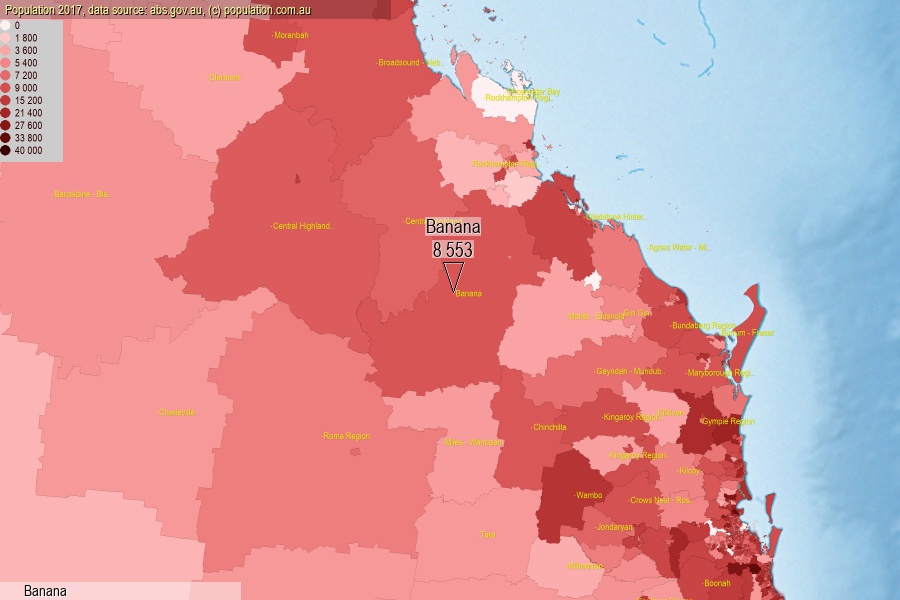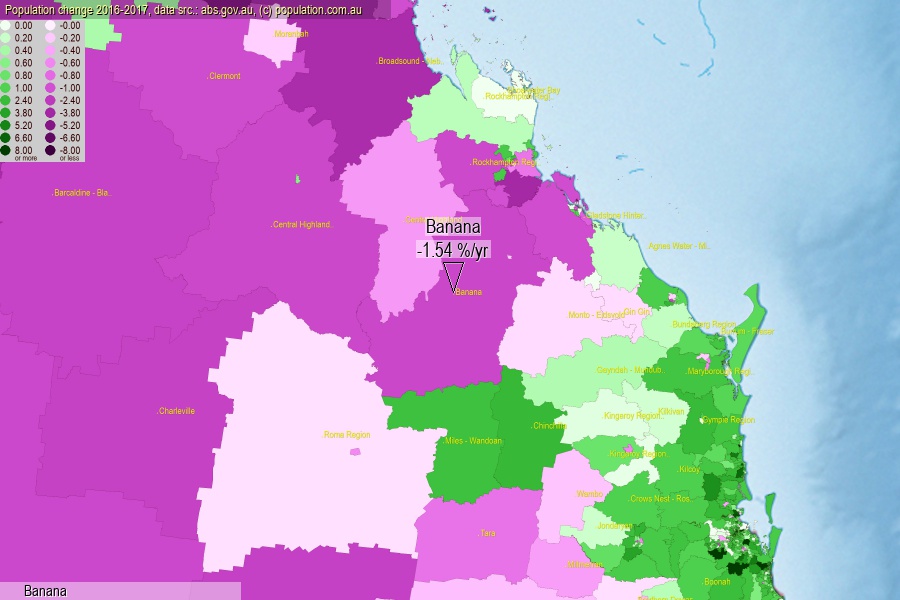 population.com.au
population.com.auLast official estimated population of Banana (as Statistical Area Level 2) was 8 553 people (on 2017-06-30)[2]. This was 0.03% of total Australian population and 0.171% of QLD population. Area of Banana is 28 531.30 km², in this year population density was 0.30 p/km² . If population growth rate would be same as in period 2016-2017 (-1.54%/yr), Banana population in 2025 would be 7 553. [0]



Click to enlarge. Banana is located in the center of the images.
Population [people], population density [p./km²] and population change [%/year] [2]
View borders » (new window) [4]
[2001-2002] -1.99 %/Yr.
[2002-2003] -1.93 %/Yr.
[2003-2004] -1.98 %/Yr.
[2004-2005] -1.09 %/Yr.
[2005-2006] +0.44 %/Yr.
[2006-2007] -2.20 %/Yr.
[2007-2008] -0.83 %/Yr.
[2008-2009] +0.09 %/Yr.
[2009-2010] -1.19 %/Yr.
[2010-2011] -0.88 %/Yr.
[2011-2012] +0.24 %/Yr.
[2012-2013] +0.07 %/Yr.
[2013-2014] -0.52 %/Yr.
[2014-2015] -0.18 %/Yr.
[2015-2016] -0.65 %/Yr.
[2016-2017] -1.54 %/Yr.
[0] Calculated with linear interpolation from officially estimated population
[1] Read more about SA2 and Australian Statistical Geography Standard (ASGS) on abs.gov.au
[2] Population data from Australian Bureau of Statistics (Population and density: 2017; change: 2016-2017)
[3] Digital Boundaries: Australian Statistical Geography Standard (ASGS) 2016.
[4] Border coordinates are simplifyed using Ramer-Douglas-Peucker algorithm.